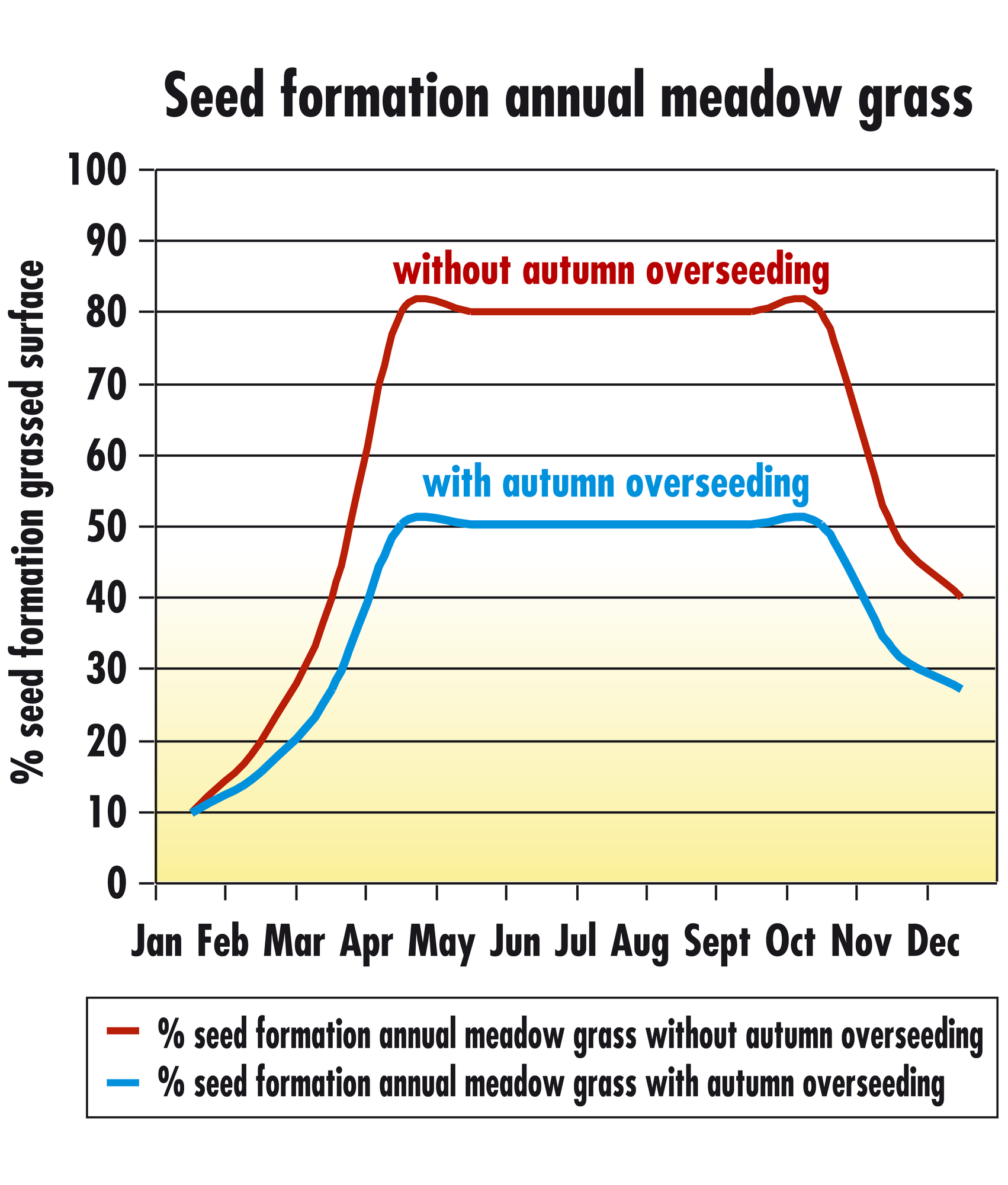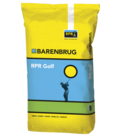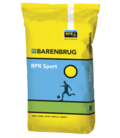Bare patches, a target for annual meadow grass
Bare patches are a real target for weeds such as annual meadow grass. This grass can establish itself very quickly. It has the capability to multiply vigorously, even at low temperatures. Without overseeding, these bare patches will rapidly occur and, as a result, filled in with annual meadow grass in no time. Overseeding with RPR® or SOS®, also in the autumn season, can reduce the proportion of annual meadow grass by as much as 40% leading up to the next spring.










